According to the Swimming Pools Act 1992, outdoor swimming pools must be surrounded by a fence that acts as a child-proof barrier. The perimeter fence must separate the pool from the residences in the area and from neighboring or private properties.
The fence must be designed, constructed, installed, and maintained under Australian Standard AS1926.1-2012 - Swimming pool safety fences.
Minimum fence requirements
- Internal swimming pool fencing height must be at least 1.2m high around the perimeter, measured on the outside of the building.
- The boundary fence as part of the pool fence must be 1.8m high, measured from inside the swimming pool enclosure.
- There must be a minimum of 900mm separation between the upper and lower horizontal components of the fence to maintain a non-climbable zone.
- The gap between the bottom of the fence and the finished ground level must not exceed 100mm.
- The gap between each barrier component must not exceed 100mm.
- The non-climbable zone must extend 300mm from the barrier into the swimming pool area and 900mm outside the swimming pool area.
- Perforated or mesh barriers must have holes no greater than 13mm for fence heights of 1.2m
- Perforated or mesh barriers of 1.8m in height with holes greater than 13mm must not exceed 100mm.
- All swimming pool fencing must be in good condition with no broken or loose palings.
- There must be no objects, such as barbecues, furniture, planter boxes, trees, or shrubs, within 900mm of the fence, which could allow a child to climb over the fence.
- Gates to the swimming pool area must open outwards and must be fully self-closing and self-latching from any open position, including from resting against the latch itself.
- An appropriate resuscitation sign must be displayed in the immediate vicinity of the swimming pool area.
NOTE: This is not a complete list of requirements. Please refer to the Australian Standard for detailed legislation and requirements. There are provisions for older swimming pools to comply with older versions of the Standards.
Guidance pictures for fence compliance
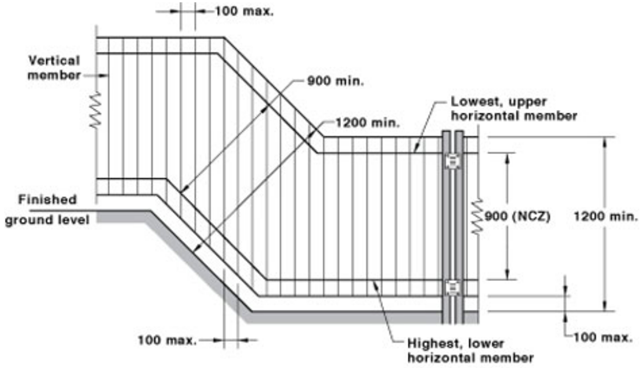
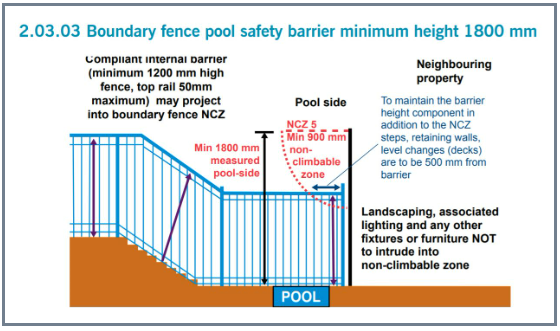
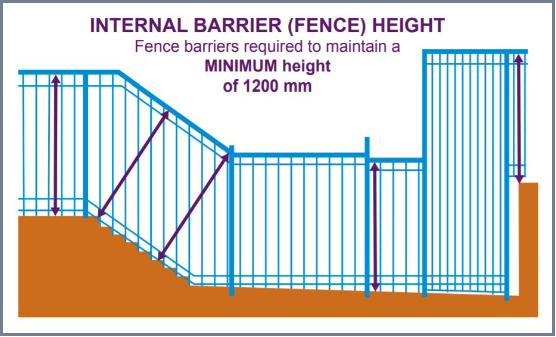
Non-climbable Zone
To prevent children from climbing over fencing into the pool area, the laws require pool owners to make sure they maintain a ‘non-climbable zone’ around the pool.
- Any trees, shrubs, or any other objects such as a barbeque, pot plants, toys, ladders, and chairs must not be within the 90cm non-climbable zone.
- This zone is measured in an arc shape from the top of the pool fence arching towards the ground.
- It also includes the space extending 30cm inside the pool area – this space should also be cleared of any potential footholds or handholds.
- Any horizontal climbable bars on the pool fence must also be spaced AT LEAST 90cm apart.
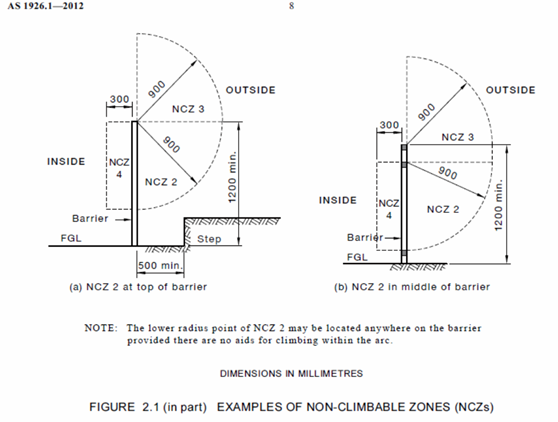
Doors in pool barriers
If you have a door that forms part of a pool barrier you must make sure that:
- It self-closes without the application of manual force
- It self-latches and requires manual release.
- The latching device is at least 150cm off the ground.
- It has a non-climbable zone of 90cm that is at least 120cm above the floor.
- It does not open towards the pool.
- It does not have any pet doors.
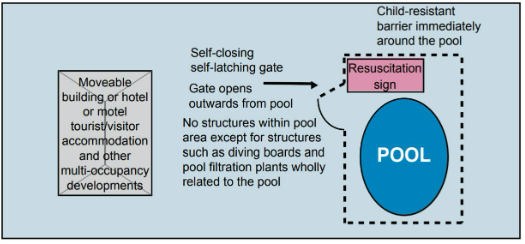
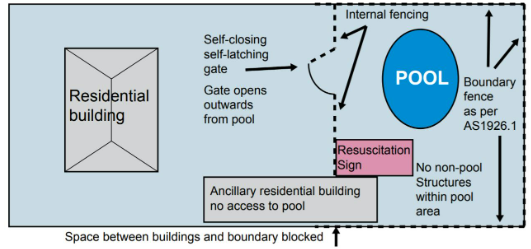
Windows in pool barriers
If you have windows that form part of a pool barrier, they must have:
- A locking device or a security screen fixed to the building that prevents them from opening more than 10cm.
- If it does not satisfy this requirement, you will need to install a locking device or security screen that reduces the gap to 10cm or less.
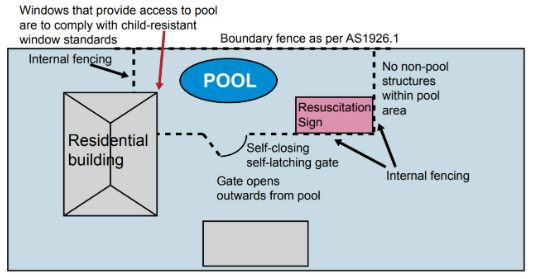
Gate closing and latching devices
Check to ensure that your pool gate:
- Is never propped open and is always kept shut.
- Swings outwards (away from the pool area). If it does not swing outwards, the gate must be re-hung so that it does.
- Shuts automatically from any open position, without having to forcibly close it.
- Automatically locks (self-latches) when it closes.
- If the gate does not shut and lock automatically, the pool gate should be permanently fastened until a new lock and closing device can be installed.
Signage
Appropriate and clear warning signs must be attached to the pool fence and gate.
In case of an emergency, the law requires that you have a cardiopulmonary resuscitation (CPR) sign displayed near your pool. The sign must be in good condition and able to be read easily from 3 meters.
Examples:
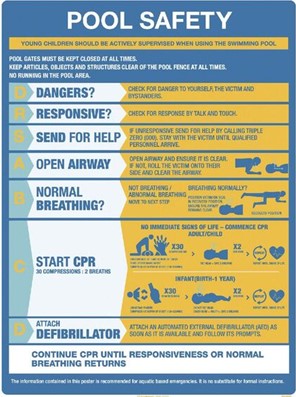

Pool fence and gate maintinence
All fence bolts, screws, and fasteners must be tight and in good order. Any loose bolts, screws, and fasteners should be tightened or replaced. Self-closing gate hinges, locks and latches should be sprayed with lubricating oil or silicone.
Manufacturers of the pool fence and gate should provide written instructions on how to maintain your pool fence and gate. This may include the regular replacement of springs and regular spraying of self-closing gate hinges, locks, and latches with lubricating oil or silicone. Proper maintenance can help to prevent many of the faults relating to self-closing and self-latching gates.
